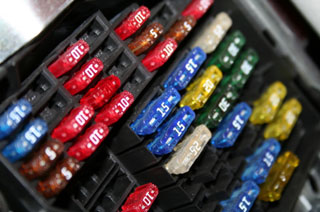Electrical issues with automobiles can be very complex. The reason for this is that vehicles today have accessories that far exceed cars of the past. The computer systems rely on sensors for feedback and communicate with each other. In between all of this is electrical wire and other components such as relays, resisters, fuses, breakers, and much more. When a problem occurs the Technician will use different diagnostic equipment to assist in resolving the issue. A wiring diagram is a blue print of the electrical system. If clearly points out the circuits and color codes of the wiring. The Technician needs this information to trace and test circuits. The diagnostic computer can be used for information, activating devices for testing, and component monitoring. The digital volt ohm meter ( DVOM ) is a tool used to check voltage and resistance in the electrical system. Other specialty tools on the market can be used in conjunction with these main tools.

Technicians today are called technicians because the day of the mechanic is over. A mechanic is someone that can repair machinery or engines. A technician is someone specializing in a skilled trade. The two are very close to the same, the main difference is the technician has the skill to diagnose the complex vehicles of today. The educational level of the technician is much higher than the mechanic.
In the auto repair business you will find three levels of workers in the shop. A,B, and C level workers and they are as follows. A= Technician, B= Mechanic, and C= Helper or in Training. The technician will handle diagnosing and repairing complex issues. The mechanic is very skilled with changing parts and the helper usually handles very simple jobs. His or her goal is to some day be a A or B employee. Even a person coming out of a technical school or junior college starts out as a helper or C employee. They are expected to become a working A or B technician with in the first few years of on the job training.

